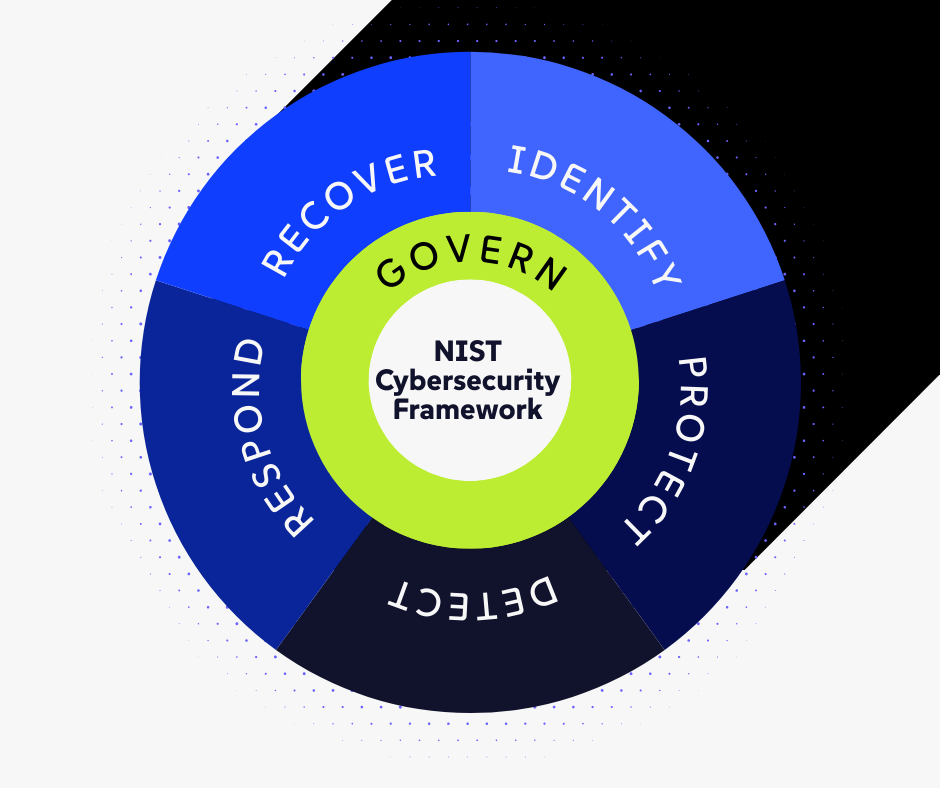At 2:17 AM on a Saturday, your 24/7 SOC gets a critical alert. An attacker has bypassed your defenses and is actively encrypting your main file server.
What happens next?
For most businesses, the answer is chaos. Frantic calls are made to an IT provider who may be asleep. Your CEO is woken up with no information. Your team starts randomly unplugging servers, likely destroying critical forensic evidence. This panic, this "wait and see" approach, is where the real damage occurs.
This is not a technical manual for your IT team. It is a strategic governance document for your executive team. Its sole function is to provide a clear path through a crisis, ensuring calm, methodical action takes the place of costly, chaotic panic.
This guide is a non-technical briefing for leaders on the NIST "Respond" function. We will explain what an Incident Response Plan (IRP) is, why it's a C-suite document (not an IT checklist), and how having one is the difference between a bad day and a "going out of business" event.
The $1.49 Million Mistake: The Financial Cost of "Winging It"
What is an Incident Response Plan (and Why Isn't It an IT Plan?
The 5 Phases of an Effective IRP (A vCISO's Translation)
Your "Respond" Team: The People in the "War Room"
The CompassMSP Integrated Response: Why Our Model is Different
Frequently Asked Questions About Incident Response and the NIST Respond Function
The $1.49 Million Mistake: The Financial Cost of "Winging It."
As a business leader, your job is to manage financial risk. The "Respond" function is one of the most powerful risk-management tools you have.
The data on this is not subtle. According to the 2024 IBM "Cost of a Data Breach" Report:
- The average cost of a data breach for a company with a tested Incident Response (IR) plan was $2.90 million.
- The average cost for a company with no IR plan was $4.39 million.
The difference is $1.49 million.
That is the price of "winging it." That $1.49 million is the direct cost of panic, wasted time, uncontained damage, and poor decisions made under duress.
The most shocking part? The same IBM report found that only 36% of organizations have a regularly tested, updated IR plan. This means nearly two-thirds of businesses are actively choosing to pay an extra $1.49 million when they are breached. A vCISO-led plan is designed to move you into that prepared, resilient, and financially secure 36%.

What is an Incident Response Plan (and Why Isn't It an IT Plan?)
An Incident Response Plan (IRP) is a formal, documented playbook that dictates exactly who does what, who they call, and what they say from the first second a critical incident is detected.
Your IT team or provider participates in the IRP, but they do not own it. An IRP is a business-governance document that coordinates four teams:
- Technical (IT/MSSP): The "firefighters" who contain and eradicate the threat.
- Leadership (C-Suite): The "governors" who make mission-critical business decisions (e.g., "Do we shut down the factory?").
- Legal (Counsel): The "advisors" who manage privilege, reporting, and regulatory risk.
- Communications (PR/HR): The "voice" who manages the message to employees, clients, and the public.
A "plan" that only includes the IT team will fail, because it doesn't account for the three areas of greatest risk: legal liability, operational downtime, and reputational damage.
The 5 Phases of an Effective IRP (A vCISO's Translation)
A vCISO-led plan follows the NIST-defined phases. For a business leader, this is the simple, logical flow from "alarm" to "all clear."
1. Preparation (The "Fire Drill")
This is the 90% of the work you do before the fire. This is where your vCISO works with you and team to build the plan, assemble the "war room" contact list, pre-draft communications, and establish the technical "firebreaks" in your network. Most importantly, we test this plan with a tabletop exercise—a "fire drill" where we simulate a breach and see how your leadership team responds.
2. Triage & Analysis (The "Blast Radius")
This is what your [24/7 SOC](link to Detect article) does. The alarm goes off. The SOC's job is to analyze it and answer two questions:
- Is this a false alarm?
- t's real, how bad is it?
This triage is critical. It's the difference between a "trash can fire" (one employee's laptop has malware) and "the building is on fire" (your domain controllers are compromised). This analysis determines the scale of our response.
3. Containment (The "Firebreaks")
This is the most important technical step. Stop the bleeding. The goal is to prevent the fire from spreading. This is not the time to "get rid of" the hacker. It's the time to isolate them.
This is a business-level decision. "Containment" might mean:
- Isolating the infected systems from the network.
- Shutting down your email server.
- Taking your entire manufacturing plant offline.
Your vCISO, IT team, and CEO will make this call based on the Triage data.
4. Eradication & Recovery (The "Rebuild")
After the threat is contained, we find its "patient zero" and eradicate it. We find the vulnerability they used and we patch it.
Only then do we begin Recovery. This is where we restore systems from our clean, tested backups. This phase is entirely dependent on the strength of your "Protect" controls. This is where your Disaster Recovery (DR) plan kicks in, a process we manage to get you back to 100% operations.
5. Post-Incident Review (The "Lessons Learned")
For a vCISO, this is the most important strategic step. Two weeks after the incident, we reconvene the "war room." We produce a non-technical report that answers:
- What happened?
- What did we do well?
- What did we do poorly?
- What "Protect" controls or policies must we update so this never happens again?
This feedback loop turns a costly crisis into a powerful, data-driven investment in your resilience.
Your "Respond" Team: The People in the "War Room"
An IRP is not about software; it's about people and clear roles. Your plan must explicitly name the primary and secondary contact for each role.
- The Incident Handler : This is the one person in charge. They are the "director" who runs the playbook. This is not the CEO. The CEO is busy managing the board and the business.
- Technical Lead (IT Director/CompassMSP): The "fire chief" on the ground. They lead the technical "Containment" and "Eradication" efforts.
- Legal Counsel (Internal/External): You must know when to call them. (vCISO's advice: Within the first 15 minutes). All communication should flow through them to establish "attorney-client privilege," which can protect your forensic reports from being used against you in court.
- Communications Lead (PR/HR): This person manages the single source of truth. They handle internal comms (so your employees aren't scared) and external comms (so your clients hear a confident, controlled message).
- Executive Leadership (CEO/CFO): The CEO and CFO are not running the incident. They are a key resource. The Incident Commander goes to them with data and options, and the leadership makes the big business-level decisions (e.g., "Do we shut down the plant?", "Do we pay the ransom?").
The CompassMSP Integrated Response: Why Our Model is Different
This is the central flaw in most companies' response plans. They get breached, then they try to find help. They call an expensive, third-party IR firm—a company that has never seen their network—and wastes the first 48 (most critical) hours just trying to get "plugged in."
It's like trying to find a fire department while your house is on fire.
An integrated partner model is the only model that works.
- Govern: Your CompassMSP vCISO builds, authors, and tests your IRP with you, during peacetime.
- Detect: Our 24/7 U.S.-Based SOC is the alarm. They "Triage" the event in minutes, not days.
- Respond: The SOC doesn't just send an email. They immediately escalate to the CompassMSP Managed Services team—the same engineers who already know your network, your servers, and your plan.
- One Team. One Plan. One Call. The "Containment" phase begins in minutes. The vCISO is activated as the Incident Commander. There is no panic. There is just the plan. That is the $1.49 million difference.
Frequently Asked Questions About Incident Response and the NIST Respond Feature
-
What's the difference between an IRP and a Disaster Recovery (DR) plan?
This is a critical distinction.
- An Incident Response Plan (IRP) is a crisis management plan to deal with a security threat (like a hacker). Its goal is to contain and eradicate the threat.
- A Disaster Recovery (DR) Plan is an IT operations plan to recover from data loss (like a fire, flood, or server failure). Its goal is to restore data and systems.
An IRP triggers a DR plan.
-
Who should be on my Incident Response Team?
Your IR team is not just your IT department. It must include:
- Executive Leadership (to make business decisions)
- Legal Counsel (to manage liability)
- Communications/HR (to manage the message)
- Technical Lead (to fight the fire)
-
How often should we test our IRP?
A plan you don't test is just a piece of paper. You should conduct a full "tabletop exercise" with your entire leadership team at least once a year. You should also review and update the plan (e.g., contact lists) every quarter.
-
What's the single biggest mistake in an incident response?
Panic. Without a plan, teams make three critical errors:
- They don't contain: They try to "eradicate" the threat immediately and end up spreading it.
- They destroy evidence: They panic and unplug servers, wiping the "in-memory" forensic data.
- They don't have one spokesperson: Multiple people give conflicting, damaging reports to clients or employees.
-
When do I have to call my lawyer or cyber insurance?
Immediately. Your cyber insurance policy has a specific, 24/7 number you must call, often within 24-48 hours. If you wait, you may void your coverage. Your vCISO's plan will have this number and the legal counsel's number on the very first page.
-
What is a "tabletop exercise"?
A tabletop exercise is a "fire drill" for your leadership team. Your vCISO will present a realistic breach scenario (e.g., "Ransomware has encrypted your finance server. What do you do?"). We then walk through the entire IRP, step by step, to find the gaps in our plan, process, and communication before a real crisis.
-
Why can't my IT provider just handle this?
Your IT provider is a vital part of the technical response, but they are not (and should not be) your Incident Commander. They are not equipped to make C-level business decisions, manage legal privilege, or handle crisis communications. A vCISO-led program integrates your IT provider as the "fire chief" while the vCISO manages the entire crisis.
-
What's the cost of not having an IRP?
The documented, average cost is $1.49 million in additional damages. This doesn't even include the "unquantifiable" costs of lost client trust, reputational damage, and the chaos of having your leadership team "winging it" during the worst week of your company's life.
-
How does a vCISO lead the "Respond" function?
The vCISO is the author, trainer, and commander for the "Respond" function.
- Before: They author the plan, train your team, and test it with tabletop exercises.
- During: They serve as the "Incident Commander," running the playbook, coordinating all teams (legal, tech, comms), and briefing leadership.
- After: They lead the "Lessons Learned" review to make your company more resilient.







